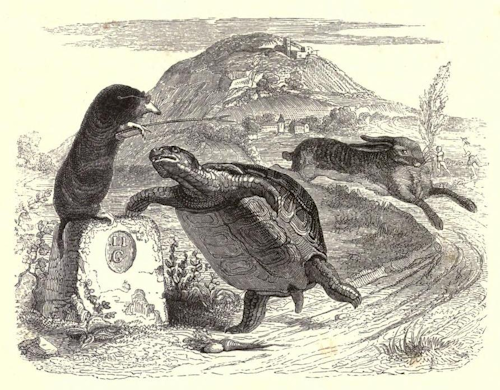The Tortoise & The Hare
Illustrates Focus, WIP Limits, Sustainable Effort
In fast-paced Agile environments, the temptation to go faster often overwhelms the need to go smarter. Teams rush into delivery, burn out quickly, and wonder why their velocity never quite tells the full story. The classic tale of the tortoise and the hare gives us a deceptively simple lens to reflect on our habits as teams and leaders.
This fable1 speaks to Product Owners chasing output, Scrum Masters caught in the buzz of ceremonies, and Agile Coaches trying to help organizations slow down just enough to actually learn.

Once upon a time, there was a boastful hare and a quiet tortoise. Tired of the hare's bragging, the tortoise challenged him to a race. The hare laughed but agreed.
At the start, the hare bolted down the path, leaving the tortoise far behind. Confident of his win, the hare stopped midway and took a nap under a tree.
The tortoise, steady and focused, kept moving forward. No stops. No distractions.
By the time the hare woke up, the tortoise was steps from the finish line. The hare dashed to catch up but was too late. The tortoise had already crossed the line. Slow, steady, consistent.
Lessons Learned
Speed is Not the Same as Progress
The hare was fast but not dependable. The tortoise made slow, visible, and meaningful progress. Agile teams that deliver value do so through rhythm and reliability, not chaotic bursts of effort. Predictable systems outperform frantic ones over time.
Focus Beats Hustle
The tortoise had a single goal and stuck with it. The hare got distracted and lost sight of the finish line. In Agile environments, distraction is expensive. Multitasking, context switching, and chasing side quests reduce flow and clarity. Focused teams stay aligned and deliver more.
Sustainable Pace Wins
The tortoise never overexerted. He kept a pace he could maintain. The hare exhausted himself and missed the mark. Sustainable pace is not a luxury. It is a strategic advantage. Burnout, overcommitment, and hero culture are signs of poor systems, not poor effort.
Confidence Without Discipline Is Risky
The hare was skilled but overconfident. Confidence without humility creates blind spots. Agile teams must combine technical ability with disciplined feedback loops. Overlooking Retrospectives, ignoring Definition of Done, or skipping refinement often stems from the same false sense of certainty.
Systems Thinking Over Individual Heroics
The hare relied on personal brilliance. The tortoise relied on a repeatable system: one step after another. Agile is not a race to show off individual speed. It is about designing systems that work even when no one is sprinting at 100 percent.
Coaching Tips
- Highlight Cadence Over Velocity: Help stakeholders shift their focus from output volume to delivery rhythm. What matters is that value flows steadily and predictably.
- Model Restraint and Reflection: Use this story to talk about the value of stopping short of overcommitment. Encourage teams to plan with honesty and margin.
- Challenge Hero Culture: If the team has a hare or two, reframe heroism as system improvement, not late-night sprints. Invite the group to build reliability together.
- Use This Story for Release Planning: Many teams plan like the hare, all-in and full throttle. Use the parable to frame smaller, spaced delivery goals that build confidence over time.
- Check for False Urgency: Ask, “Are we running toward something or just running?” Help the team pause and decide what race they are actually trying to win.
In the end, Agile teams win not by racing, but by learning what kind of race they are running.
Let others sprint and nap. Be the one that moves forward without stopping.
That is how you cross the line.


